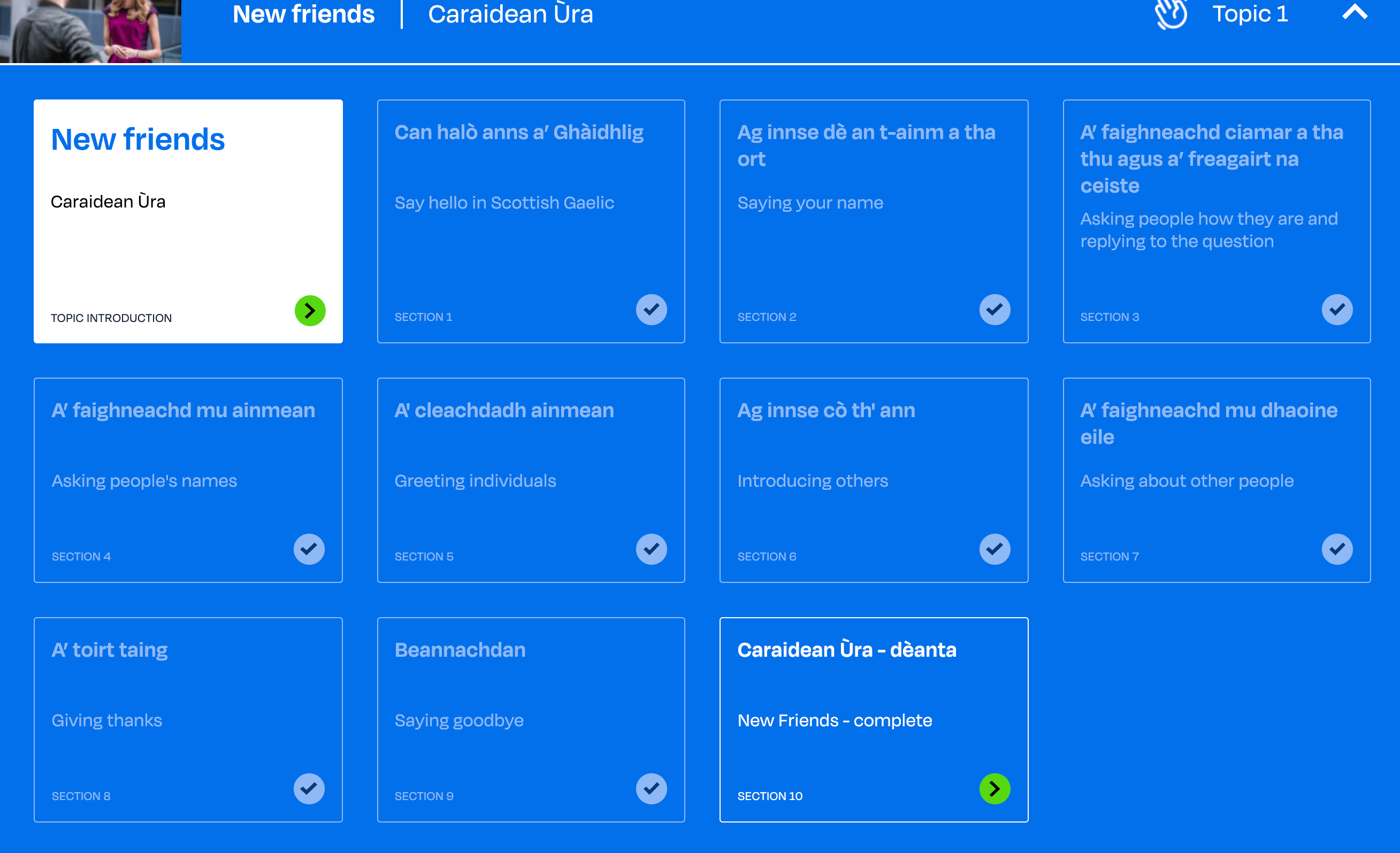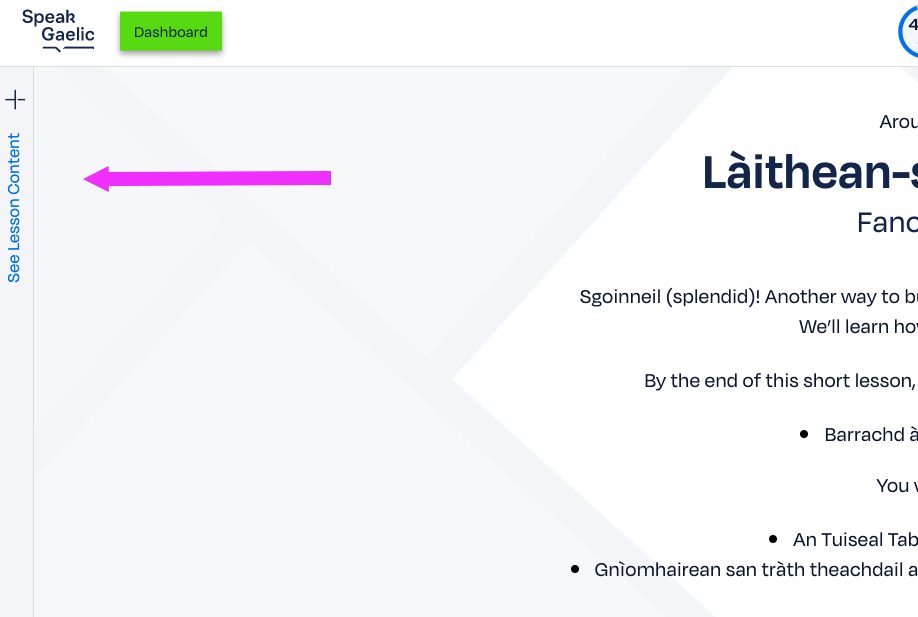Structair: Càit a bheil thu a’ fuireach?
Structure: Where do you live?
Find out from Joy how to say where you live.
We have enough names or pronouns to fill in the blanks to complete the full structure.
Càit a bheil …?
Where is…?
Càit a bheil … a’ fuireach?
Where is … living?
Càit a bheil thu a’ fuireach?
Where are you living?
Càit a bheil sibh a’ fuireach?
Where do you live?
Càit a bheil Calum a’ fuireach?
Where does Malcolm live?
We know how to ask the question but how do we answer it? We need new vocabulary.
ann an
in
Use ann an for place names without the definite article.
ann an Dùn Dè
in Dundee
ann an Inbhir Nis
in Inverness
ann an Dùn Èideann
in Edinburgh
ann an Alba
in Scotland
Tha mi a’ fuireach ann an Alba
I live in Scotland
Use ann am for place names without the definite article which begin with B, M, F or P.
ann am
in
ann am Peairt
in Perth
ann am Port Rìgh
in Portree
ann am Baile a’ Mhanaich
in Balivanich
We’ve learnt lots of countries which take the definite article An | A’.
They take anns instead of ann.
anns a’
in the
anns an
in the
anns an Spàinn
in Spain
anns an Ostair
in Austria
anns a’ Chuimrigh
in Wales
anns a’ Phòlainn
in Poland
Tha Calum a’ fuireach anns a’ Phòlainn
Malcolm lives in Poland
Remember that Gaelic nouns take a gender, and this is true of places too. Countries are generally feminine, so lenite with the definite article, but let’s look at a couple of masculine place names with the article.
We’ve already met some changes in place names when we learnt how to say where we are from.
An t-Òban
Oban
anns an Òban
in Oban
lose the t-
An Gearastan
Fort William
anns a’ Ghearastan
in Fort William
The An changes to a’ and the word lenites its first consonant (you see an h in the spelling).
The fancy title for when a noun follows a preposition is the dative case.




